Dr. Vadym Zayets
v.zayets(at)gmail.com
My Research and Inventions
click here to see all content |

Dr. Vadym Zayetsv.zayets(at)gmail.com |
|
 |
classic model ofspin transportmodel of spin-down/spin-up bandsmore chapters on this topic:IntroductionBasic Transport equationsSpin and charge currentsSpin drainNon-magnetic metalsFerromagnetic metalsSemiconductors (Basic)Threshold spin currentSpin gain/dampingSpin RelaxationSpin Hall/ Inverse Spin Hall effectsee-interaction
classic model ofspin transportmodel of spin-down/spin-up bandsmore chapters on this topic:IntroductionBasic Transport equationsSpin and charge currentsSpin drainNon-magnetic metalsFerromagnetic metalsSemiconductors (Basic)Threshold spin currentSpin gain/dampingSpin RelaxationSpin Hall/ Inverse Spin Hall effectsee-interaction
classic model ofspin transportmodel of spin-down/spin-up bandsmore chapters on this topic:IntroductionBasic Transport equationsSpin and charge currentsSpin drainNon-magnetic metalsFerromagnetic metalsSemiconductors (Basic)Threshold spin currentSpin gain/dampingSpin RelaxationSpin Hall/ Inverse Spin Hall effectsee-interaction |
Introduction
Spin and Charge Transport. Classical model of the spin-up/spin-down band.
|
Wrong +wrong= correct |
| There are several incorrect assumptions in the model spin-up/spin-down bands. This model violates the conservation law of the time inversion symmetry (see here). It fully ignores scattering and scatterings mainly determine the spin distributions (See here). However, in some cases the model spin-up/spin-down bands gives the same results as the correct calculations (Example is here). However, the model spin-up/spin-down bands is obsolete, it can easily hits its limitations and it should be used very carefully. Click on image to enlarge it. |
This part is based on the model of spin-up/spin-down bands. The model of spin-up/spin-down bands has been used and it is used by many researchers. There are several incorrect assumptions and oversimplifications of the model of the spin-up/spin-down bands. The basic assumption of this model, that electrons of only two opposite spin directions can coexist for a long time, is incorrect. This is because the spin rotation during frequent spin-independent scatterings mixes up the electrons all spin directions within a very short time.
However, several results, which are predicted by this model, are the same as result obtained by the correct calculations. For example. the properties of Spin drain or the properties of the Drift Charge Current and Diffusive Spin Current are correctly described by this model. They are the same as obtained by the correct calculations.
My modifications of the model of spin-up/spin-down bands:
In order to make model of spin-up/spin-down bands to be better fit to the realistic spin distributions in the electron gas, I have introduce several modifications to the model of spin-up/spin-down bands (See ![]() here):
here):
(1) I have assumed that the conductivities of the spin-up and spin-down bands are different. It significantly improves the correctness of the model. For example, in case of the spin transport in a semiconductor the modified model of spin-up/spin-down bands gives almost the same predictions as the correct calculations. (See here).
1. Spin and Charge Transport Equations
For the last 20 years, spin transport in solids has been successfully described by the Valet-Fert spin diffusion equation:
![]()
The Valet-Fert equation describes spin diffusion from regions of larger spin accumulation towards regions of smaller spin accumulation. It does not include any term describing the interaction between a spin current and a charge current. I will show that in the case of a material with spin-dependent conductivity the requirement of spin and charge conservation leads to the spin/charge transport equations:

These equations include terms that describe the interaction between charge and spin currents.
2. Spin transport in non-magnetic metals
A non-magnetic metal is defined here as a conductive material, the conductivity of which is independent on spin polarization. I will show that in the case of non-magnetic metals the spin/charge transport equations converge to Valet-Fert spin diffusion equation.
3.Spin transport in ferromagnetic metals. The conductivity of ferromagnetic metals is spin-dependent and the spin selectivity beta is constant throughout the bulk of the metal. In a ferromagnetic metal the drift current has a spin-current component. Here I explain the physical mechanism of charge accumulation along spin diffusion. It is very common feature of spin transport in a variety of materials. |
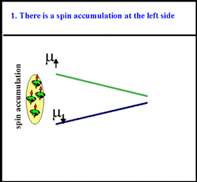 |
4.Drift Charge Current and Diffusive Spin Current The basic properties of Drift Charge Current and Diffusive Spin Current are explained. |
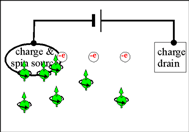 |
Utilizing simple approximations I will show that the spin relaxation is linearly proportion to spin chemical potential ![]() .
.
|
I will show that a spin drain attracts spin current. Therefore, a spin path is modified by the spin drain. Also, I will show that a spin diffusion length in a material is influenced by the spin drain. |
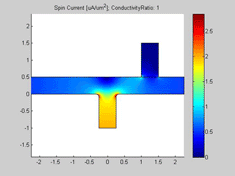 |
7.Semiconductors. Basic Equations.
The conductivity of semiconductors is spin-dependent only in the presence of a spin accumulation. There is a substantial interaction between the diffusion and drift currents in semiconductors. Here I have obtained a set of 5 equation, which describes the spin and charge transport in the semiconductors.
8. Semiconductors.Threshold spin current for spin diffusion A unique feature of the spin transport in the semiconductors is the existence of the threshold spin current, above which the spins can not diffuse. In the case when magnitude of the diffusion spin current is smaller, but near the magnitude of threshold spin current, a region of high spin and charge accumulation is formed. |
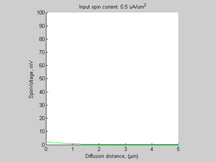 |
9. Semiconductors. Gain/damping of spin diffusive current by drift charge current In the semiconductors there is a significant interaction between a diffusive spin current and a drift charge current. One consequence of this interaction is a gain/dumping of a spin diffusive current by a drift charge current. I will show that in the case when the charge current flows in the same direction with the spin diffusive current, the effective spin diffusion length becomes longer. Therefore, the spin current gains from the charge current. In the case when the charge current flows in the opposite direction to flow direction of the spin diffusive current, the effective spin diffusion length becomes shorter. Therefore, the spin current is damped by the charge current. |
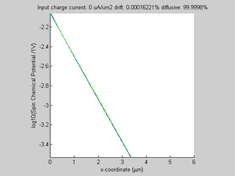 |
10. Spin Hall Effect & Inverse Spin Hall Effect Here I will show how within present spin/charge transport model to describe the Spin Hall Effect & the Inverse Spin Hall Effect |
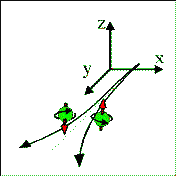 |
![]() The same content can be foundin
The same content can be foundin ![]() V. Zayets Phys. Rev. B 86, 174415 (2012) (clich here
V. Zayets Phys. Rev. B 86, 174415 (2012) (clich here ![]() to download pdf);or http://arxiv.org/abs/1205.1278
to download pdf);or http://arxiv.org/abs/1205.1278![]()
I will try to answer your questions as soon as possible